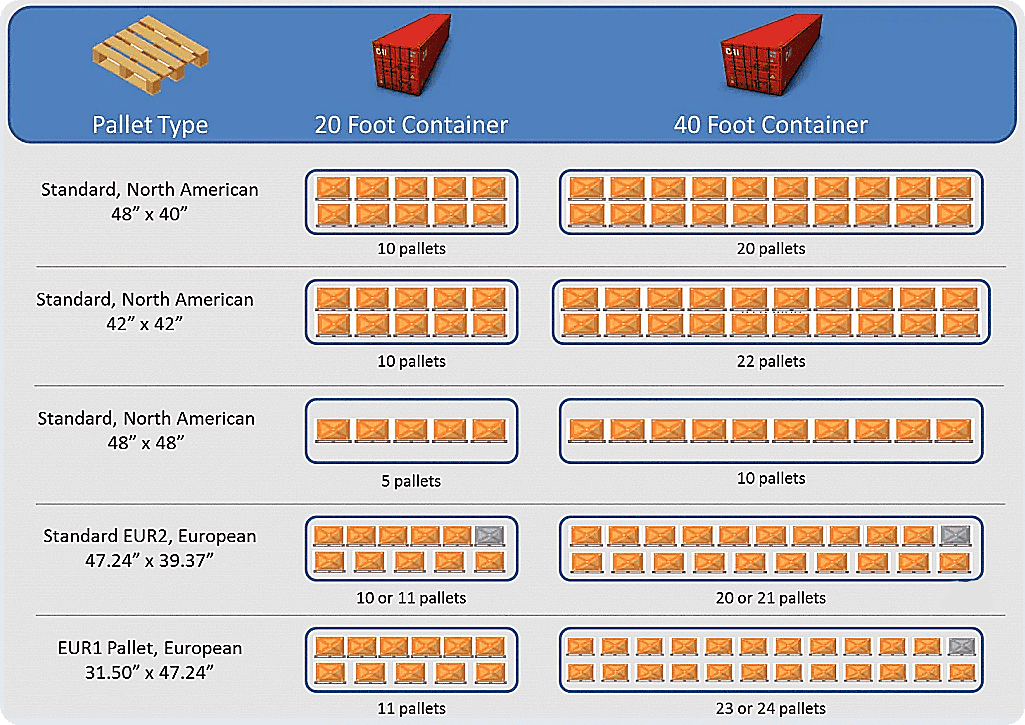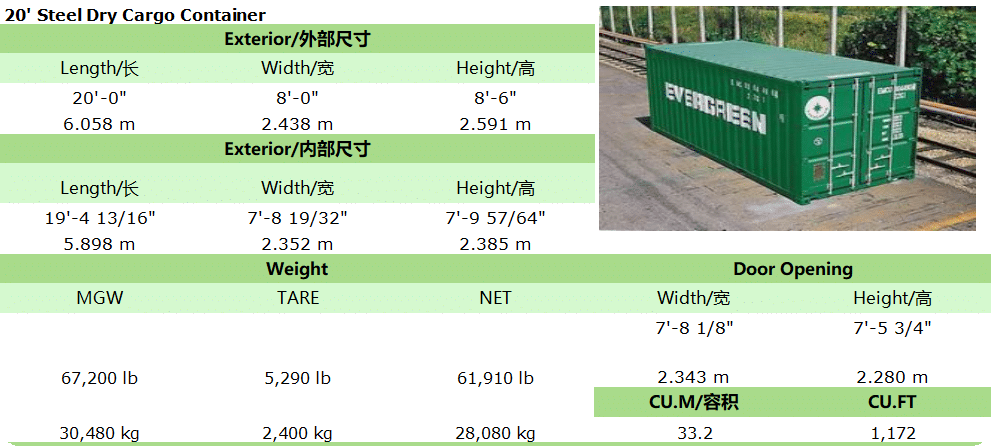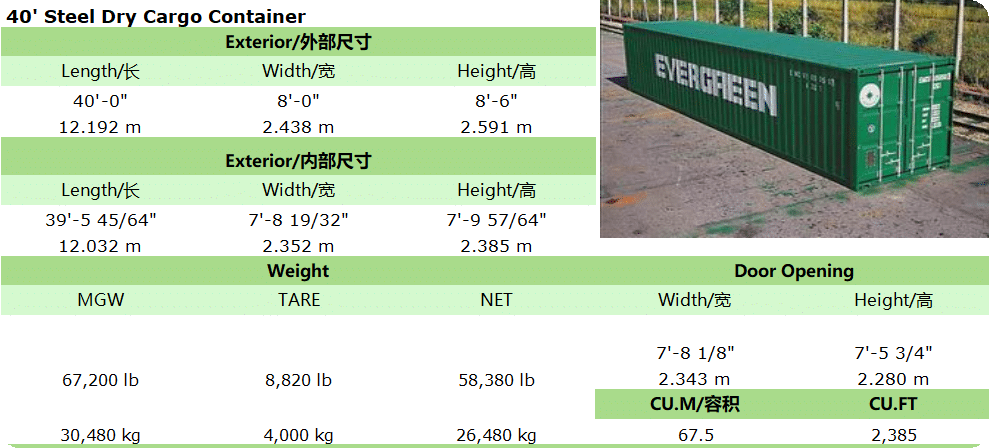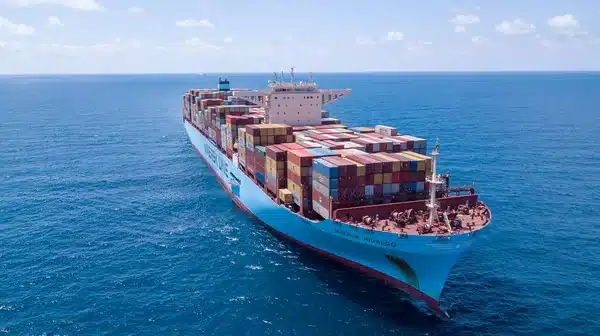Shipping containers are essential to global trade, providing a standardized, secure, and cost-effective solution for transporting goods across vast distances. Among the various sizes available, 20ft and 40ft containers are the most widely used due to their versatility and compatibility with multiple modes of transport. For businesses and individuals involved in shipping or logistics, understanding these containers’ exact dimensions, weight limits, and applications is critical to optimizing cargo operations and ensuring compliance with international regulations.
This guide offers an in-depth look at 20ft and 40ft shipping containers, including their dimensions, weight capacities, variants, and practical tips for effective usage.

Table of Contents
Exact Dimensions of 20ft Shipping Containers
The 20ft container, also known as a TEU (Twenty-foot Equivalent Unit), is a standard unit in the shipping industry. Its compact size makes it ideal for transporting smaller cargo loads while maintaining compatibility with global shipping infrastructure. Below are its precise dimensions:
| Measurement | Metric (m) | Imperial (ft) |
|---|---|---|
| External Length | 6.058 | 20.0 |
| External Width | 2.438 | 8.0 |
| External Height | 2.591 | 8.5 |
| Internal Length | 5.898 | 19.4 |
| Internal Width | 2.352 | 7.7 |
| Internal Height | 2.393 | 7.8 |
| Door Opening Width | 2.340 | 7.7 |
| Door Opening Height | 2.280 | 7.5 |
| Internal Volume | 33.2 m³ | 1,172 ft³ |
This size is commonly used for smaller shipments, such as textiles, electronics, and furniture.

Exact Dimensions of 40ft Shipping Containers
The 40ft container, equivalent to 2 TEUs, is designed for larger shipments and bulk cargo. Its dimensions are as follows:
| Measurement | Metric (m) | Imperial (ft) |
| External Length | 12.192 | 40.0 |
| External Width | 2.438 | 8.0 |
| External Height | 2.591 | 8.5 |
| Internal Length | 12.032 | 39.5 |
| Internal Width | 2.352 | 7.7 |
| Internal Height | 2.393 | 7.8 |
| Door Opening Width | 2.340 | 7.7 |
| Door Opening Height | 2.280 | 7.5 |
| Internal Volume | 67.7 m³ | 2,389 ft³ |
The 40ft container is ideal for transporting large quantities of goods, such as industrial machinery, raw materials, and bulk consumer products.

Weight Limits for 20ft and 40ft Containers
Shipping containers have strict weight limits to ensure safety during transport by road, rail, and sea. These limits include the container’s tare weight (empty weight), maximum payload (cargo weight), and gross weight (combined weight of the container and its cargo).
Weight Limits for 20ft Containers
Tare Weight: 2,200 kg (4,850 lbs)
Maximum Payload: 28,280 kg (62,170 lbs)
Gross Weight: 30,480 kg (67,200 lbs)
Weight Limits for 40ft Containers
Tare Weight: 3,750 kg (8,268 lbs)
Maximum Payload: 26,730 kg (59,052 lbs)
Gross Weight: 30,480 kg (67,200 lbs)
Note: These weight limits may vary slightly based on the manufacturer and specific container designs.
Variants of 20ft and 40ft Containers
Shipping containers come in various types to accommodate different cargo needs. Below are the most common variants:
1. High Cube Containers
- Key Feature: Increased height of 2.896 m (9.5 ft).
- Best For: Lightweight but bulky items requiring extra vertical space, such as furniture or vehicles.
2. Refrigerated Containers (Reefers)
- Key Feature: Temperature control capabilities for perishable goods.
- Best For: Food, pharmaceuticals, and other temperature-sensitive cargo.
3. Open Top Containers
- Key Feature: Removable top for oversized cargo.
- Best For: Machinery, construction materials, and goods that cannot fit through standard doors.
4. Flat Rack Containers
- Key Feature: Collapsible sides for easy loading and unloading.
- Best For: Heavy or oversized goods, such as industrial equipment or vehicles.
Practical Applications of 20ft and 40ft Containers
Common Uses for 20ft Containers
- Industries: Electronics, textiles, and agriculture.
- Cargo Types: Small to medium-sized shipments, such as raw materials or packaged goods.
Common Uses for 40ft Containers
- Industries: Manufacturing, automotive, and retail.
- Cargo Types: Bulk shipments, including machinery, large furniture sets, and consumer goods.
Regulations and Compliance for Container Use
Adherence to international shipping regulations is essential when using 20ft and 40ft containers:
SOLAS (Safety of Life at Sea): Requires verified gross mass (VGM) for each container.
Customs Compliance: Proper documentation, including bills of lading and packing lists, is necessary for smooth customs clearance.
Cargo Safety: Follow guidelines for weight distribution and secure cargo with appropriate straps or pallets.

Tips for Optimizing Shipping with Containers
Maximize Space: Utilize internal volume efficiently to reduce shipping costs.
Choose the Right Container: Match the container type to your cargo needs.
Plan Ahead: Book containers early during peak seasons to avoid delays.
Partner with Experts: Collaborate with logistics providers like Tonlexing for end-to-end support.
Tonlexing: Your Trusted Partner for Container Shipping
Tonlexing provides seamless container shipping solutions for businesses worldwide:
Customizable Services: Tailored options for FCL (Full Container Load) and LCL (Less-than-Container Load).
Competitive Pricing: Affordable rates for sea, air, and intermodal transport.
Comprehensive Support: Assistance with documentation, customs clearance, and real-time tracking.
Global Reach: Partnerships with major carriers for efficient routes to Europe, the Americas, Asia, and Africa.
Understanding the dimensions, weight limits, and variants of 20ft and 40ft containers is vital for efficient logistics planning. Whether you are shipping small consignments or bulk goods, selecting the right container type and adhering to industry regulations ensures secure and cost-effective transport.
Partnering with experts like Tonlexing simplifies the process, offering comprehensive support from booking to delivery. Contact Tonlexing today to explore competitive rates and customized solutions for your shipping needs.


